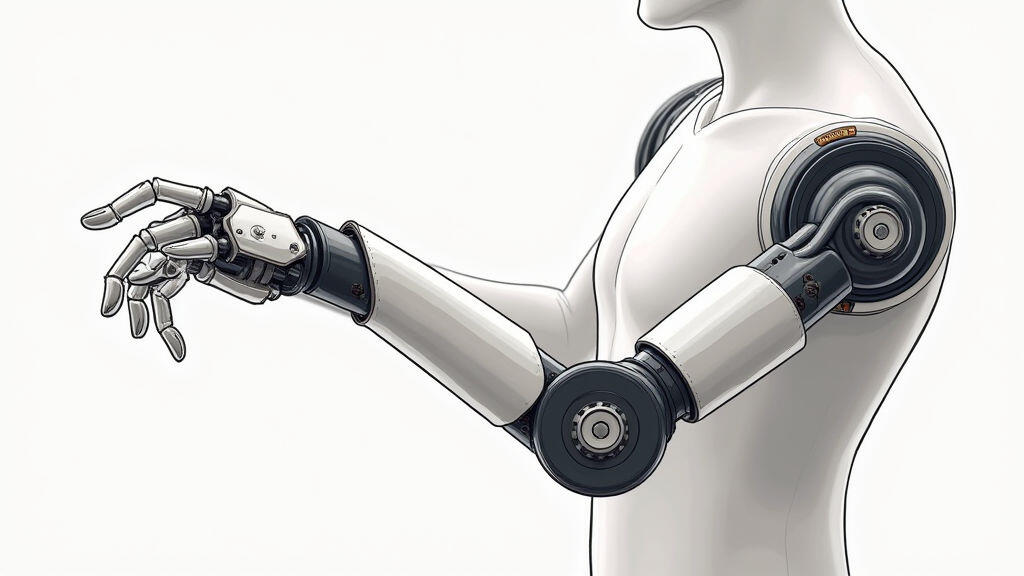
In today’s rapidly evolving robotics landscape, the demand for smaller, faster, and more energy‑efficient machines is soaring. At the heart of many of these devices lies the humble micro DC gear motor. These compact components provide the precise motion and torque required for tasks ranging from dexterous surgical robots to lightweight drones. As robotics manufacturers dig deeper into the performance limits of micro DC gear motors, they are discovering that fine‑tuning these motors can unlock unprecedented levels of agility, reliability, and sustainability.
Below, we explore the key reasons driving this shift toward optimized micro DC gear motors, the challenges involved, the innovative solutions that are emerging, and the potential impact on the robotics industry as a whole.
Unlike large industrial actuators that can rack up space, weight, and cost, micro DC gear motors offer a striking combination of size, torque density, and efficiency. They are small enough to fit inside wearable exoskeletons or autonomous delivery robots, yet powerful enough to drive precision tools, grippers, and locomotion mechanisms.
Because many cutting‑edge robots rely on a dense network of these motors to coordinate complex movements, any performance bottleneck can ripple throughout the system. Therefore, manufacturers are turning to performance optimization as a direct avenue to improve speed, accuracy, and lifespan.
Several market forces are accelerating the focus on micro DC gear motor performance:
Micro DC gear motors sit at the intersection of mechanical, electrical, and thermal constraints, making performance optimization a multi‑disciplinary task:
Manufacturers and research teams are addressing these challenges through a combination of design, materials, and software strategies.
Using high‑temperature composites, such as carbon‑nanotube reinforced alloys, allows cores to be lighter while maintaining magnetic flux density. Additionally, co‑rodoring—a method where the gear hub is cast as a single piece with the motor housing—reduces mechanical play and weight.
3D printing with metal alloys and ceramic inserts can create gear teeth with nanometer‑level surface roughness, greatly reducing backlash and increasing wear resistance. Furthermore, the additive process enables internal cooling channels that ease heat management.
Custom winding geometries that focus magnetic flux on the most demanding sections of the motor reduce stray losses. Coupled with adaptive phase lock control, these motors can adjust voltage and current profiles on the fly, ensuring optimal torque output while limiting heat.
Integrating hall sensors, temperature probes, and current monitor ICs into the motor package gives real‑time data. Machine‑learning models can then predict fault conditions and adjust operation before failure occurs, extending motor life.
Combining spur gears with small geared planetary stages lets manufacturers achieve very high overall gear ratios without large gear bodies. This hybrid approach preserves torque density while reducing inertia, essential for rapid acceleration and braking.
These emerging techniques collectively push micro DC gear motors toward higher torque density, lower weight, and better energy efficiency—all within the tight confines of modern robotic designs.
The ripple effect of optimized micro DC gear motor performance can be seen across several robotic segments:
Looking ahead, we can anticipate a shift toward “smart motors” that are not merely high‑performance components but are network‑aware, communicating status and performance metrics in real time. This will enable fleet‑wide predictive maintenance and constant optimization across robot ecosystems, unlocking new possibilities for both robotics companies and end users.

Micro DC gear motors have become the workhorses of modern robotics, granting machines the ability to move fast, light, and precisely. As manufacturers chase the twin goals of miniaturization and power efficiency, performance optimization of these small actuators is no longer optional—it is essential. Through material innovation, precision manufacturing, integrated sensing, and intelligent control, the industry is overcoming the unique challenges that arise at this scale.
For robotics manufacturers, mastering micro DC gear motor performance means delivering lighter, faster, and more reliable robots that can meet the growing demands of diverse applications—from healthcare to logistics. The future of robotics hinges on these tiny yet mighty engines, and the ongoing focus on their optimization signals a continued march toward smarter, more capable machines.
Leave A Reply
Your email address will not be published. Required fiels are marked